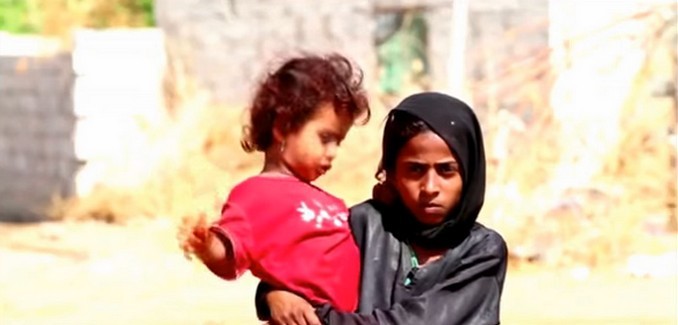As the Syrian village of Madaya continues to be under siege by the forces of Iran-backed dictator Bashar al-Assad, with nearly two dozen people dead from starvation, the hunger problems continue to worsen throughout the country. One in three Syrians doesn’t have adequate access to food, NPR reported Tuesday.
This food insecurity is caused by civilians surrounded by armed forces—both Assad’s army and ISIS are holding thousands of people under siege—as well as broken supply lines and ruined farms. The scarcity is leading to skyrocketing food prices. The cost of rice is currently $93 per pound—723 percent higher than the start of the war, according to the World Food Programme.
“In some cases,” the organization wrote, “substantial amounts of wheat (the main staple of the Syrian diet) have had to be stockpiled, because farmers have not been able to sell or transport them. That means that markets in parts of the country will not have sufficient stocks to meet demand, consumers will not have sufficient access to the wheat they require to feed their families, and both rural and urban livelihoods will be further stressed.”
"Starve or kneel" Assad tells Madaya. His killer squads have told the whole State: "Assad, or we burn the country". pic.twitter.com/1ClxEb3DN2
— Kyle W. Orton (@KyleWOrton) January 19, 2016
Mother in #Madaya, Syria describes 'dire' conditions in town where starvation is rampant: https://t.co/BT6sTzlwTr pic.twitter.com/MuNL1Oq252
— ABC News (@ABC) January 19, 2016
Foreign Policy reported last week that the United Nations knew of the dire situation in Madaya, but did nothing until reports and images of starving people started appearing on social media a few weeks ago. Despite two U.N. aid convoys allowed into the city, Reuters reported on Monday that five more people in the city had died of starvation, and dozens more were at risk.
Avi Issacharoff, the Middle East analyst for The Times of Israel, wrote earlier this week that the lifting of the nuclear-related sanctions on Iran was a “dark day” for the region, as the billions of dollars that would flow to Iran would “lead to a great deal more weaponry, conflict, bloodshed, and death throughout this area.”
[Photo: SABC Digital News / YouTube ]




